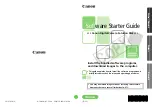
Switching Introduction
©2008 Allied Telesis Inc. All rights reserved.
14.10
AlliedWare Plus
TM
Operating System Software Reference C613-50003-00 REV E
Software Version 5.2.1
Layer 2 Filtering
The switch has a forwarding database (also known as the
MAC address table
) whose entries
determine whether frames are forwarded or discarded over each port. Entries in the
forwarding database are created dynamically by the learning process. A dynamic entry is
automatically deleted from the forwarding database when its ageing timer expires.
The forwarding database supports queries by the forwarding process as to whether frames
with given values of the destination MAC address field should be forwarded to a given port.
For each VLAN, the destination MAC address of a frame to be forwarded is checked against
the forwarding database. If there is no entry for the destination address and VLAN, the frame is
transmitted on all ports in the VLAN that are in the forwarding or disabled state, except the
port on which the frame was received. This process is referred to as
flooding
. If an entry is
found in the forwarding database but the entry is not marked
forwarding
or the entry points to
the same port the frame was received on, the frame is discarded. Otherwise, the frame is
transmitted on the port specified by the forwarding database.
Channel Groups (Link Aggregation)
Channels (either static or dynamic—LACP) increase channel reliability by distributing the data
path over more than one physical link. Channels must be configured on both ends of a link or
network loops may result. Ports in a channel group need not be contiguous. A mirror port
cannot be a member of either a static or a dynamic channel group.
Aggregation
criteria
For individual links to be aggregated into a channel group they must:
■
originate on the same device or stack
■
terminate on the same device or stack
■
be members of the same VLANs (
vlan command on page 16.16
)
■
have the same data rate (
speed command on page 15.24
)
■
share the same admin port key (assigned by using the
channel-group mode (LACP)
command on page 21.3
command)
■
be operating in full duplex mode (
duplex command on page 15.5
)
The hardware must also be capable and have the capacity to handle the number of links to be
aggregated.
















































